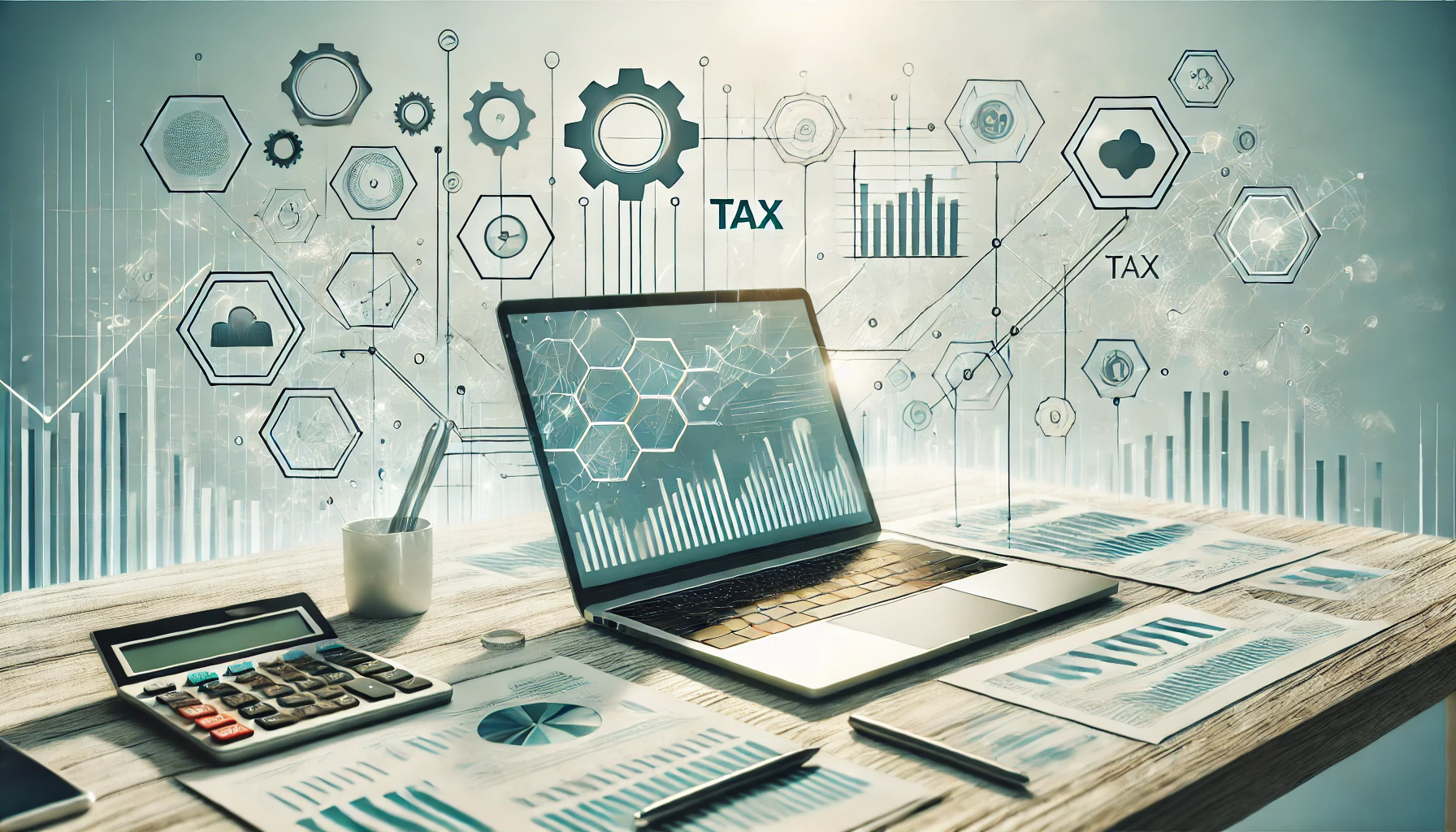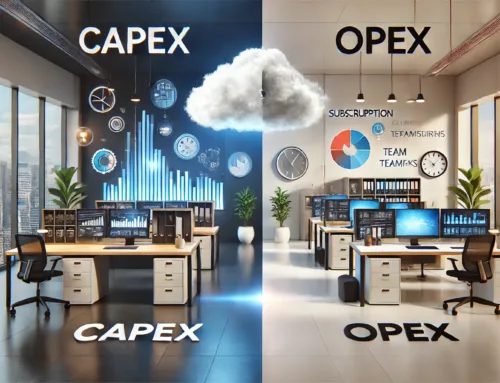These days, there are all kinds of problems businesses have to deal with when it comes to taxes. They improve the way that you do tax things, am I right?! From a small startup to full-grown corporations, technological advances have been automating the tax processes in a better and faster way. The solutions have a wide collection of elements that perform automatic calculations, which can track costs and prevent any violations of regulations.
Both local and international tax management services can drastically impact how businesses conduct themselves against financial commitments. QuickBooks accounting software or any cloud-based application facilitates accessing all financial data and tax information on-the-go. It can help with faster decision-making based on the information available to team members. Automated systems also decrease human error, taking forever to get done, and keep businesses focused on what they do best with peace of mind that their taxes are in order.
Cloud-Based Tax Software Solutions
Tax software solutions Cloud has realized the change in the tax world, where business owner want to see their company run successfully and for it, they want the current finances of their companies to grow or destroy from inside with great speed. They can enter the same way and the tax information from anywhere, thanks to cloud technology.
and install on-premise software for the prior tax year. Yes, some people share/post pictures and Soft Maker is among the first to actually implement this idea (not in absolute terms—better than Google or most others though), but you still need a daily backup. Cloud-based solutions could provide your business with a more efficient way to deal taxes if, by chance, your IRS forms aren’t… – Read This Read More in every app Built-in App By Using Some Online Services (Built-In) *(DOCSBUT Want Tax Forms At The Same Time Whether Their Programs Here are some tips Manage Your. INFO→BD. GETTY. IMAG. Increases team collaboration and time to prepare taxes. Hastens the process of tax readiness. CCH Access Client Collaboration has this very nature and provides firms with a confidential, cloud-based location for all their tax operation activity as they interact alongside clients in that same destination without any need to leave those workspaces. The system is designed with a simple interface that guides users at every step to understand when and how they can take an action.
All these benefits are compliance and automation-driven processes in which automatic cloud-based tax software has the inbuilt fix for that. Such systems are programmed with complex algorithms that search for differences, or triggers, in the data—things like outlier deductions and income filed from disparate sources—that could potentially flag an audit. This feature significantly mitigates compliance risks and closes off a backdoor for tax filings that do not contribute positively to the current Tax Code.
Cloud-based solutions for tax management evolution like QuickBooks induces the automation of advanced functions related to filing an aggravation, eliminating many steps. With these platforms, you typically can connect them with other financial systems to allow for automated data flow and save the need for a detect data entry. By going through this process manually, errors are not only likely but it takes a lot of time.
And tax software in the cloud is equipped with excellent security to secure data. We encrypt and require two-factor authentication for this most sensitive financial data to help protect against unauthorized access; both are common industry practices. And that is often superior to what businesses can impose on-premises, which should be very comforting for people responsible of confidential tax information.
Scalability: Tax software solutions that are on cloud have a very high scalability. So, you can scale transaction levels, and even leaving room for new geographical expansion on the tax jurisdiction side is not a problem. This scalability means that businesses are able to keep using the same tax management solution as they grow, rather than having to make a disruptive change when outgrowing their current system.
Cloud-based tax software solutions to streamline the entire process It is always a good idea for businesses of any scale to keep some kind of online accounting tool in their arsenal. These platforms offer a variety of functionalities, from the ease-of real-time accessibility & leverage of collaboration tools and automated compliance checks to its stringency in security layers and means, which are changing for enterprises not only tax department operations but their daily modus operandi. With more businesses turning to digital transformation, it is possible cloud management solution could be the key to a successful and correct taxation.
Businesses can cut down on their manual processes and safeguard against breaches of financial data by using cloud-based tax software solutions—start with choose the best antivirus software to ensure cybersecurity and prevent breaches.
Automated Bookkeeping and Expense Tracking
Thanks to automated bookkeeping and expense tracking, businesses have been able to transform how they treat finances. AI and ML are used in these technologies to simplify financial transaction recording, management, etc. The time-consuming nature of bookkeeping is not reduced without this system in place, and the risk for error & lack thereof adds an additional fiscal burden for companies.
AI-powered receipt scanning
AI-powered receipt scanning is the perfect example of a type of advancement in automated bookkeeping. It uses optical character recognition (OCR) to read data from the physical receipts and then enter it into something like a digital version. Up to 95% of receipts can be accurately processed with no benefit from condition or language using the most recent systems An eye software that helps the organization automate its expenses, ensuring that no manual data entry is possible as well as any kind of error from a human side.
Over the past few years, receipt scanning tools have become popular with small business owners and freelancers. Not only do these tools snap a picture of the paper receipt, they also use OCR to take what’s on that sheet and make it machine-readable so other expense management & accounting software can be opened up for integrations. By automating the process of data extraction and categorization, these apps save valuable time and resources for businesses of all sizes.
Integration with bank accounts and credit cards
Additionally, automated bookkeeping systems can connect directly to bank accounts and credit cards. The integration enables Zero SaaS to automatically pull in transactions so you can avoid manual data entry and errors. When bank accounts and credit cards are connected to smart bookkeeping software, all transactions can be recorded in real time, eliminating any room for error or guesswork over the item categorization.
Some advantages for businesses integrating bank accounts with accounting software include:
- Automating imports of transactions (hours a month saved)
- Increased accuracy (less manual data entry & less risk of mistakes)
- Visibility into real-time financial positions allows educated decisions to be made.
- Organizing financial data, such as automatically categorizing it
Automatic categorization of expenses
This feature is a must-have for any modern tax management solution, as it automatically categorizes expenses. These systems are based on AI & ML algorithms to segregate various categories of financial transaction records, such as accounts payable or receivable, and many other customizable categories. Through this process, the software is able to hone in on repeated data that it learns over time and have automatic categorization of all data going forward.
A lot of tax management solutions, such as QuickBooks, provide interchangeable expense categories to assist businesses in their own financial tracking. Automated categorization: Financial software can, in most cases, automate the assignment of its transactions to a category remembered by past behavior or via pre-defined rules.
This helps companies significantly with their processes, eliminating lots of manual data entry and ensuring all transactions are recorded properly, offering the chance to monitor your spending patterns. Automating tax not only eases your indirectly related tasks but also enables you to take better financial decisions and helps keep up with the ever-changing rules.
E-filing and Electronic Payment Systems
E-filing and electronic payment systems have changed the way businesses make payments for their obligations. Today, when we use these tax management solutions for submitting the taxes and making payments, then it takes significantly less time to comply with taxes.
Streamlined tax form submission
With the convenience and speed of e-filing, this forma mentality has proved difficult to eliminate. The IRS usually notes e-filing is the fastest way to get your tax refund dead and recommends it. Most businesses at this stage have already been pre-authorized, and so their tax preparation software is able to transmit electronic submissions directly into the system. This is how businesses can get their tax claims filed through the web, decreasing the chance of errors while additionally speeding up everything.
An important benefit of e-filing is a short processing time. The IRS also stressed that it will process refunds to the bank account of taxpayers who e-file ASAP and provide direct deposit information within 21 days, provided there are no issues with their tax return. Quick processing times contribute to better cash flow for businesses.
Secure online payment options
Electronic Payment Options: Several tax management solutions have introduced electronic payment facilities exclusively for businesses to pay their federal taxes and user fees. These are all meant to be simple and free, with some being available for no cost at all to auto-release users. The US Department of Treasury offers the free service Electronic Federal Tax Payment System (EFTPS) so that businesses can make payments for their federal taxes electronically.
Hundreds of tax management solutions—including QuickBooks—interface with these electronic payment systems to schedule payments up to 365 days in advance. function helps businesses to manage their cash flow in a more stable manner by allowing them to make tax payments on time. Also, the systems usually give a prompt acknowledgment of payments, realize bank statements, and also show that transactions have been executed correctly.
Faster processing and refunds
The adoption of e-filing and electronic payment systems has led to faster processing times for tax returns and quicker refunds for businesses. The IRS states that e-filing is the fastest way to get a tax refund, with most refunds issued within 21 days. This rapid turnaround time has a significant impact on improving cash flow for businesses, especially those that rely on timely refunds to manage their operations.
Moreover, e-filing provides businesses with quick confirmation of their tax submission. Typically, filers receive an acceptance or rejection notice within 48 hours of transmitting their tax return. This prompt feedback allows companies to quickly address any issues with their submissions, ensuring compliance and avoiding potential penalties.
In conclusion, e-filing and electronic payment systems have transformed the tax management landscape for businesses. By streamlining tax form submissions, offering secure online payment options, and enabling faster processing and refunds, these tax management solutions have significantly simplified tax processes for companies of all sizes.
Data Analytics for Tax Planning
We know that tax planning is all new, and data analytics proves to be the actual benefit in letting businesses make strategic decisions on taxes as well as achieve intelligent insights for greater possibilities of optimal tax strategies. Powered by cutting-edge technologies and intricate algorithms, an enterprise can now decipher vast pools of data to know its standing with respect to taxes—aas well as where it all came from.
Predictive analytics for tax liability
One of the applications in tax is predict-out estimating responses that are taxable and future commitments tools for power stakeholders to achieve important long-term discharge arranging targets. By layering together data-driven insights from historical models, through live market indicators and contemporary economic levers to probable business decisions, a snapshot emerges in near real-time of where the firm appears to be headed. Companies should apply these methods to provide a more solid foundation for projecting revenue and earnings targets, improving the quality of and speeding up tax provision work resulting in fewer true-up entries.
Tax management descriptor that will be part of predictive analytics describing what it would cost for different types of business events to take place (new ventures, M&A transactions, or changes at state and local taxes) in the lines of the solution. This enables corporations to take fact-based decisions and harmonize their tax strategies along with overall business objectives.
Identifying tax-saving opportunities
The above areas are just a few of the typical applications where data analytics is essential to see below many businesses stone and identify potential tax-saving opportunities that may be additionally generated for your company. Combing through massive repositories of transactional data can help organizations identify patterns and outliers that are ripe for tax opportunities. For instance, predictive models need to inform various supply chain analyses of the source and nature of manufactured goods so they can be better classified on tax documents, resulting in reduced duties or quicker refunds with other companies.
Tax management software such as QuickBooks has the ability to pick out high numbers against national averages and suggest personalized, money-saving tips. Its features will allow it to demonstrate common areas for potential tax savings and can help diminish the possibility of getting notices in audit.
Scenario modeling for financial decisions
As tax planning becomes more complex, the ability to test future scenarios based on actual current and prospective rates has emerged as a critical component of any plan. This service provides estimation of future tax liabilities for different scenarios, i.e., a forecasted view of how the clients will be in various circumstances, and the company can take decisions based on data.
Tax solutions TaxCube Other than year/case analysis and variance, you will be able to create tax adjutment plans with advanced built-in adjustment plan generator. These tools offer a brief narrative description of each taxpayer’s status, plus specifics about how new or pending changes to depreciation allowances and tax rates as well as allowable contribution limits would affect that particular taxpayer
With scenario modeling, businesses can use data analytics to examine different approaches and see what might result from them so they stay better prepared for robust tax strategy decisions of all types. The entire approach helps organizations in maximizing their tax positions and thereby aligning the tax planning with that of overall business objectives.
Wrapping Up Data Analytics has overhauled tax planning, equipping businesses with powerful capabilities to forecast their potential tax dues, assess opportunities for savings along the way, and model multiple scenarios. In collaboration with ITE and more such future provisions, companies are realizing the need for sophisticated tax management solutions to efficiently deal with compliances in addition to making informed financial decisions at ease.
Conclusion
There is a paradigm shift in tax management with technology integration, and businesses are responding proactively. MockMvcase Study These encompass cloud-based solutions to automated bookkeeping and data analytics, all of which bring about a significant streamlining of the tax processes. These not only save time and avoid errors, but they also give your accountant insight to be able to do things like minimizing the effect of the new tax laws on your business.
Looking into the future, it is apparent that technology will continue to aid in making tax filing processes easy. Forward-looking businesses that leverage these types of solutions can run their tax operations with greater efficiency and accuracy, gaining a competitive edge in the process. Albeitchallenges may arise as tax regulations evolve; however, the continuous advancement of tax management technologies is set to stay in line, offering businesses all the necessary tools for companies and service providers to move forward confidently into this vexing taxation world.




